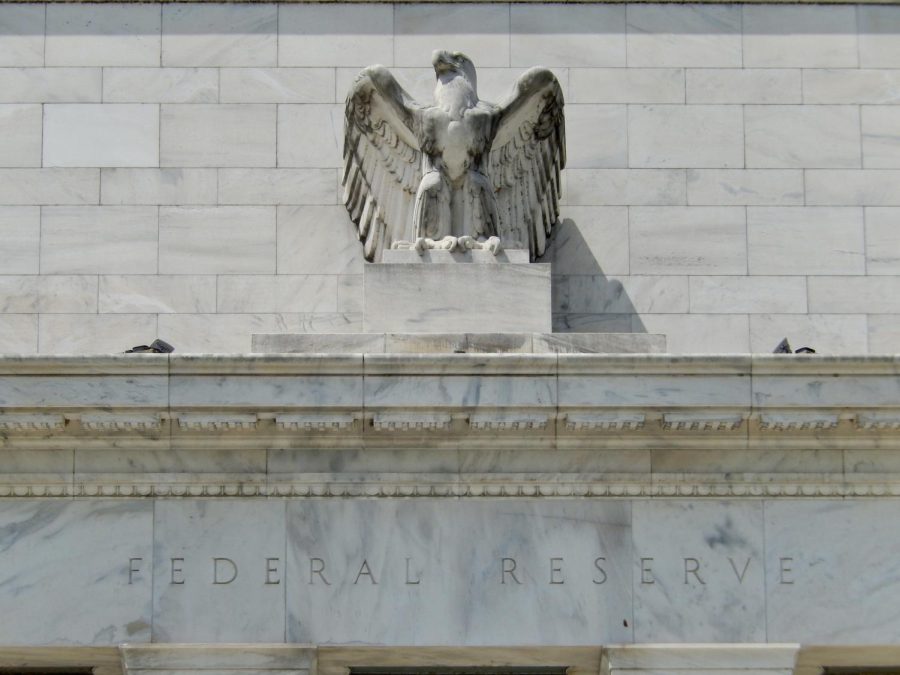Federal Reserve raises rates by a quarter point
May 15, 2023
The Federal Reserve raised its interest rate for a 10th consecutive time on May 3 by 25 basis points, bringing it between 5% and 5.25%.
Equities and Treasury yields both decreased, and many investors are now unsure whether this is the final boost for some time.
Following the announcement, markets closed with the Dow Jones Industrial Average down 0.8%, the S&P 500 down 0.7% and Nasdaq composite down 0.5%.
Oil prices, a key driver of inflation, dropped below $70, showing positive signs of controlling inflation.
“Inflation has moderated somewhat since the middle of last year,” Fed Chair Jerome Powell said in a news conference. “Nonetheless inflation pressures continue to run high and the process of getting inflation back down to 2% has a long way to go.”
But this declaration comes in the wake of recent problems in the financial industry, including the failure of multiple banks, the most recent being First Republic Bank, which JPMorgan Chase & Co. acquired.
In an attempt to allay fears about the financial sector, Powell said that things have improved since SVB Financial Group was taken over by authorities on March 10 and that the banking system “is sound and resilient.”
Nevertheless, he predicted that following the unrest, banks will be more reluctant to lend, thus slowing the economy and reducing inflationary pressures.
After Powell mentioned how tighter credit conditions will affect economic activity, hiring and inflation, his remark this time looks more dovish.
This suggests that the Fed might proceed with more caution for future rate hikes.
Furthermore, the March report’s important term suggested that additional policy firming may be necessary to reach a monetary policy stance. Additionally, an inflation rate of 2% was left out of the Fed’s most recent statement.
The omission might indicate that the Fed is thinking about pausing rate increases for the time being.
In March, the personal consumption expenditures, a crucial inflation indicator for the Fed, increased by 4.2%. Additionally, compared to when the raises started, the unemployment rate is now 3.5%, which is significantly lower.
Although job postings were boosted in April, there were still signs that the labor market is cooling. While the Fed’s own economists warned that the latest banking turbulence is increasing the likelihood of a recession, the Fed still thinks a soft landing is feasible.
Powell reiterated U.S. Treasury Secretary Janet Yellen’s argument for raising the debt ceiling, despite the economic concerns. He went so far as to say that even if harm is done, the Fed shouldn’t be held responsible.
According to Yellen’s warning, the U.S. government may default on its debt as of June 1. Also, the issue of lifting the debt ceiling is becoming critical.
The Fed’s move to increase interest rates is an effort to rein in inflation, but it also has repercussions for the whole economy. Increased borrowing costs can impede economic growth because of higher interest rates.
While doing so may be important to contain inflation, it can also result in a slowdown in economic development.
Many investors are closely observing the Fed’s moves and speculating whether this will be the final rate hike for some time.
The market’s conflicted response suggests that there is uncertainty regarding the direction of interest rates. Despite the Fed’s belief that the industry is solid overall, recent financial sector developments raise the possibility that caution may be necessary.
It will take the next few months of data to tell whether the Fed rate hikes will push inflation to 2%. Only time will tell if the Fed can win the bid, not lose credibility and engineer a soft landing.
If that desirable scenario isn’t achieved, it will put the dollar in a difficult situation against other currencies holding firm ground.









